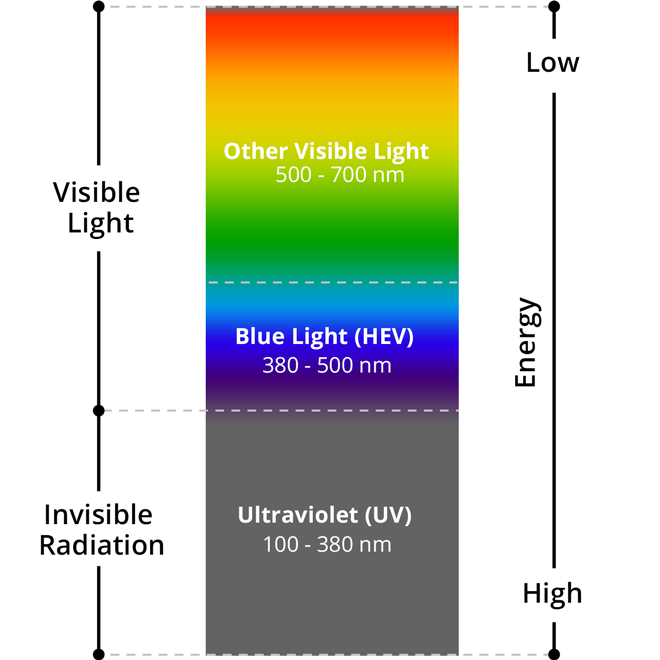This post was most recently updated on March 21st, 2020
Our world is becoming more and more technologically based. Many tasks that we used to perform manually, as well as many physical objects, are being replaced with digital counterparts. Therefore, avoiding devices and screens is virtually impossible. However, many parents worry about the short and long term effects of screen time on their children’s vision and development and wonder what they could be doing to help minimize some of these side effects.
What Constitutes Screen Time?
Although it may seem like a basic question, defining what is screen time and what is not is a helpful start to the discussion. Screen time is any time that the child spends watching television, playing games on their phone or tablet, looking at a computer, or playing a handheld video game. Most doctors agree that children should not remain stationary for more than one hour at a time while doing a sedentary activity and that they should additionally have no more than 2 hours of screen time every day. This may be difficult for many parents to achieve due to the engaging nature of these devices.
What are the Effects of Excessive Screen Use?
Long term risks are being studied, including a possible association with the increased incidence of myopia worldwide. In fact, the amount of patients with myopia has nearly doubled in the past 50 years. At this time (2019) there have not been any large population based studies linking screen use with myopia development. Though other studies have linked decreased time outdoors and excessive near work with myopia development, the use of screens has not been specifically defined as the underlying culprit. Anecdotally speaking, one might conclude an increase use of digital devices will likely decrease time spent outdoors and likely increase time spent focusing up close, leading to greater risk of myopia development.
Short term risks are the more obvious public health concern, leading to decreased productivity at school. In addition to the headaches and neck pain that an individual may develop, those who spend too much time in front of a screen may develop dry eye syndrome, eye strain, blurry vision and irritated eyes.
How Does Screen Time Affect the Eyes?
A suspected culprit from screens is the increased exposure to blue light. Blue light is present in large quantities in the sunshine. Blue light in small quantities is a good thing as it helps our bodies to distinguish between daytime and nighttime and helps us to sleep when it gets dark. However, overexposure to blue light may cause additional eye strain, sleep disruptions, and in some cases headaches or migraine. The problem with blue light in screens is not necessarily because there is large amount of blue light being emitted from the screens. The amount is fairly low when compared with the sun, but when these extra amounts are increased day by day because of screen use, there may be a negative effect, especially when used for the entire day, at nighttime, or after dark.
Another problem with excessive screen time is decreased blink rate. When using these devices we have a tendency to not blink as much, which leads to less tear production, and dry eye. Dry eye is becoming increasingly prevalent in children, which is unusual as it was a condition typically reserved for older demographics.
What Can Be Done to Reduce Exposure to Blue Light?
One of the most helpful boundaries for parents to put in place is to keep their children from using devices in bed or after a certain time in the evening. Screen time in a dark room can magnify these negative effects and result in eye strain and problems with sleep. Eliminating screen time during the hours directly before bedtime can be incredibly helpful. Also, limiting screen time as much as possible and aiming for the 2 hours or below mark is essential.
Even if a parent is great at limiting screen time for their children, it may be a good idea to invest in a blue light filter for devices. Many devices now have applications in which you can cut the blue light emitted from the screen. One such application, called f.lux, can be set to decrease the amount of blue light emitted from a screen based on the time of day. Parents should also make sure that their children are wearing sunglasses when they are spending a lot of time outdoors, even during the winter. Finally, if the child has prescription eyeglasses, parents can choose to add anti-reflective coatings that limit blue light penetration.
Because a child’s eyesight is rapidly changing, it is always important to schedule an eye exam at least every two years. This recommendation includes children with no current glasses prescriptions or known vision problems. These exams are important because if any vision problems such as myopia develop, it may affect their ability to do well in school, connect with their peers, and lead a normal life. Even if a parent is closely monitoring screen time, it is still important to prioritize these biannual visits. Contact your eye doctor today to schedule a visit for your child.

